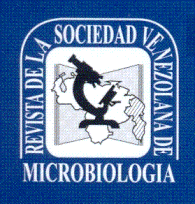Hongos asociados al manchado del grano en la variedad de arroz INCA LP-5 (Oryza sativa L.) en Cuba
Palabras clave:
arroz, manchado del grano, hongos fitopatógenos, frecuencia, patogenicidad, rice, spotting of grains, phytopathogenic fungi, frequency, pathogenicityResumen
Resumen: Se aislaron e identificaron los hongos presentes en granos de arroz manchados, de la variedad INCA LP-5, cosechados durante las épocas lluviosas de los años 2003 y 2005, en áreas de la Estación Experimental del Arroz “Los Palacios”, Pinar del Río, perteneciente al Instituto Nacional de Ciencias Agrícolas (INCA). Se determinó la incidencia y se realizaron las pruebas de patogenicidad mediante los postulados de Koch. Se identificaron 35 especies, correspondientes a 19 géneros de hongos asociados a granos manchados de la variedad INCA LP-5, y entre ellas se señalaron, como nuevos registros asociados al manchado del grano de arroz para Cuba a: Bipolaris maydis, Fusarium merismoides, F. solani, F. subglutinans, Penicillium itallicum, Phoma medicaginis var. pinodella y Syncephalastrum racemosum. Los hongos de mayor incidencia fueron Bipolaris oryzae, Sarocladium oryzae y especies de los géneros Alternaria, Fusarium, Curvularia y Phoma. Se confirmó que los hongos F. subglutinans, B. oryzae, A. padwickii, Alternaria sp., F. verticillioides, C. lunata, C. lunata var. aeria, C. pallescens, C. senegalensis, Curvularia sp., Phoma sp. y S. oryzae, son agentes causales del manchado del grano de arroz.
Fungi associated to grain spotting in the INCA LP-5 (Oryza sativa L.) variety of rice in Cuba
Abstract: Isolation and identification of the fungi present in spotted rice grains of the INC LP-5 variety, harvested during the rainy seasons of the years 2003 and 2005, was done at sites of the Experimental Rice Station “Los Palacios”, Pinar del Río, belonging to the Instituto Nacional de Ciencias Agrícolas (INCA). Incidence was determined, and pathogenicity tests were carried out according to Koch’s postulates. Thirty-five species corresponding to 19 fungi genus associated to spotted grains of the INCA-LP-5 variety were identified, and among them, the following strains were indicated as new registrations associated to spotting of rice grains in Cuba: Bipolaris maydis, Fusarium merismoides, F. solani, F. subglutinans, Penicillium itallicum, Phoma medicaginis var. pinodella and Syncephalastrum racemosum. The fungi with the highest incidence were Bipolaris oryzae, Sarocladium oryzae and species of the genus Alternaria, Fusarium, Curvularia and Phoma. It was confirmed that the fungi F. subglutinans, B. oryzae, A. padwickii, Alternaria sp., F verticilloides, C. lunata, C.lunata var. aeria, C. pallescens, C. senegalensis, Curvularia sp., and S. oryzae, are causative agents of the spotting of rice grains.






